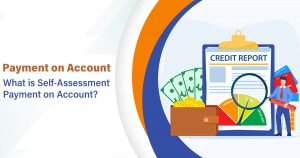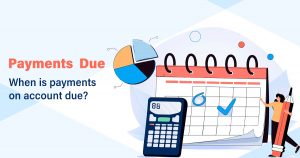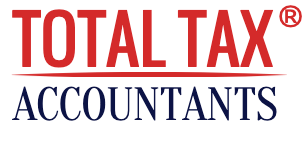When you run a business as a sole trader, one of the benefits is that initially you don’t pay any tax on revenues – this is in stark contrast to the PAYE system where employees’ salaries have tax deducted from the outset.
However, as a self-employed individual, you do need to take into consideration additional self-assessment payments – these are called payment on account, where you must make certain payments in advance.
The payments must be made to HMRC twice a year, and have been put in place to help you spread the cost of your tax bill.
What is self-assessment payment on account?

‘Payments on account’ for self-assessment are advance payments made on your tax bill – this includes Class 4 National Insurance if you are self-employed.
When is payments on account due?

You must make two payments on account each year, with the only exception being:
- Your previous self-assessment tax bill was under £1,000
- You paid over 80% of the previous year’s tax which was owed – for instance, either through your tax code or because your bank had deducted interest on savings
It must be noted that each payment is 50% of your previous year’s tax bill. Payments are typically due on the 31st of January and 31st of July, before midnight.
In case you still have tax to pay after you have made payments on account for self-assessment, you need to make a ‘balancing payment’ by the 31st of January before midnight next year.
Let’s give you a quick example to put the above into context:
Your bill for the tax year 2021 to 2022 comes up to £3,000. You make two payments of £900 each on account of this bill in 2021, so a total of £1,800.
Therefore, the total tax you must pay by midnight of January 31, 2023 will be £2,700. This shall include:
- The ‘balancing payment’ of £1,200 for the tax year 2021 to 2022 (that’s £3,000 – £1,800)
- The first payment on account of £1,500 toward your 2022 to 2023 tax bill which is, in fact, half your 2021 to 2022 tax bill.
If your tax bill for the tax year 2022 to 2023 is over £3,000 (the total of your two payments on account), then you must make a ‘balancing payment’ by the 31st of January, 2024, before midnight.
Payments on account for self-assessment do not include anything owed against capital gains or student loans, for example (if you are self-employed i.e. – those will be paid in your ‘balancing payment’).
In case you’re wondering how to check your payments on account, it’s very easy to do so:
- Login to your online account
- Choose the option which allows you to view the latest self-assessment return
- Click on ‘View statements’
This allows you to see any payments on account you have already made, and, payments you must make toward the next tax bill.
How can I reduce payment on account?
If you believe that your tax bill will be lower than what it was last year, then you may approach HMRC to request them to reduce your payments on account. This can be done online by signing in to your account or by post.
If you want to do this online, then the steps are fairly simple:
- Login to your online account
- Choose the option to view the latest self-assessment return
- Click on ‘Reduce payments on account’
If you wish to reduce payments on account via post, send form SA303 to your local tax office.
You’re probably wondering: what happens if I overpay or underpay?
This can sometimes be the case if your tax bill is higher/lower than you expected – you may end up paying the wrong amount. It’s nothing to worry about though because if you overpay, HMRC will process your refund; if you underpay, you’ll accrue interest charges against that.
Ultimately, payment on account demonstrates how important it is to put a reasonable amount of money aside for your tax bill, as well as the value of filing your self-assessment tax return at the first possible opportunity.
This especially holds true if you’re just starting out as a self-employed individual, because you want to do everything you can to avoid any unpleasant January surprises!
What if I am late?
First of all, payment on account is not something that is common among individuals who have never gone through the Self-Assessment system of taxation. And, if you believe you’re tax bill might come to, let’s say, around £10,000 – then attempting to find an extra £5,000 to satisfy your very first payment on account may be quite the ordeal, to say the least.
If you fail to pay the entire tax bill by midnight of January 31st, you will probably face interest charges on the remaining amount. This is why we always stress on the importance of contacting HMRC as soon as possible so that you can work out a “Time to pay” agreement in advance, if you feel that you are not going to be able to make the full payment on time.
How do I know if I have to make any payments on account for self-assessment?
Not every self-employed individual makes payments on account. In fact, some individuals pay only what they owe by the 31st of January after the tax year concludes.
Payments on account are due only if:
- Your previous self-assessment tax bill was over £1,000
- You did not already pay more than 80% of the tax owed at source (for instance, if you were paid this through the PAYE system)
Furthermore, if you must make payments on account, HMRC will inform you of this via your self-assessment statement.
Conclusion
Even though the above information may sound fairly simple at a glance, there are many rules and aspects which come into play. We put this post together merely to bring you up to speed on what payment on account for self-assessment is.
To gain a better understanding of the process and make accurate payments on account, feel free to get in touch with us.


